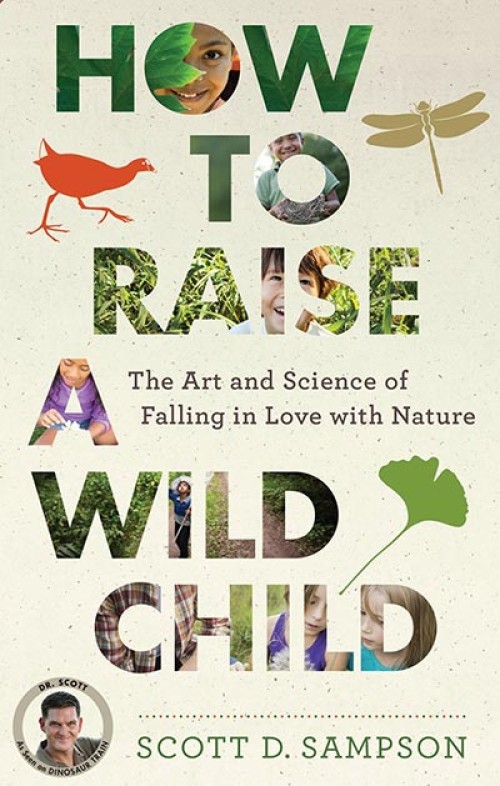by Scott D. Sampson
Houghton Mifflin Harcourt, 2015
I’ll never forget the day I learned that certain bees nest on the ground. At nine years old, I was the self appointed neighborhood nature guide. One summer, as we entered the woods, a bunch of bees exploded beneath my feet. Unnecessarily yelling at everyone to go home, I ran like the dickens to my own. Baking soda soothed over 50 stings.
According to Scott Sampson, I was a “wild child,” defined as someone who connects deeply with nature and with people. He wants every child to become “wild,” and he wants us to go outside with them – no expertise needed. Whether your children are comfortable exploring on their own or rarely play outdoors, he contends that they all need nature mentors, and you can be one of their most influential guides, starting right now. How to Raise a Wild Child: The Art and Science of Falling in Love with Nature will show you why and how.
Written for parents, teachers, and caregivers, Sampson describes three goals: make readers aware of how much we have become disconnected from nature and why this disconnect is harmful to our children; describe the process of getting connected at each age, from toddler to teen; and help adults become nature mentors to the children in their lives. It doesn’t matter where you live, he makes clear: “The best place to fall in love with nature is wherever you happen to be.”
Sampson describes three critical components for nature connection to occur: the experience of interacting with nature, deliberate mentoring by adults who explore along with the child, and an emphasis on understanding the big ideas (rather than focusing on encyclopedic facts). EMU, as he calls this trifecta, looks different at each stage of life. If that sounds daunting, rest assured that he spells out in detail how to arrange an appropriate EMU for each age group. In addition, each chapter concludes with practical nature mentoring tips.
According to Sampson, there are specific techniques to get children looking, asking, and thinking on deeper levels. One of these is having a special spot which you visit regularly to sit still and watch, listen, and smell the nature you are in at that moment. Another idea is to tell nature stories about your wanderings. He provides examples of ways to observe your mentees and ask leading questions that develop their inquisitiveness, observation skills, and enjoyment of nature.
Sampson’s credentials are notable: he is the host of the PBS kids’ show Dinosaur Train, the chief curator for the Denver Museum of Nature and Science, and a paleontologist. He cites many studies to back up his beliefs and provides an extensive bibliography. On the downside, the reader has to wade through more science than I feel is necessary.
As a teacher who explores outside with kids in all types of habitats in all kinds of weather, I can attest that most young children need no urging to interact with stuff outdoors. As the author says, “nature is a contact sport.” He encourages parents to be “hummingbirds” instead of “helicopters,” allowing children to experience bumps and bruises, stepping in only when safety merits (think leaves-of-three and swarms of bees).
The last part of the book is about using technology to connect with nature. While Sampson advocates creating times to be disconnected from electronic devices, he is realistic and encourages digital photography and the use of many fine nature apps.


